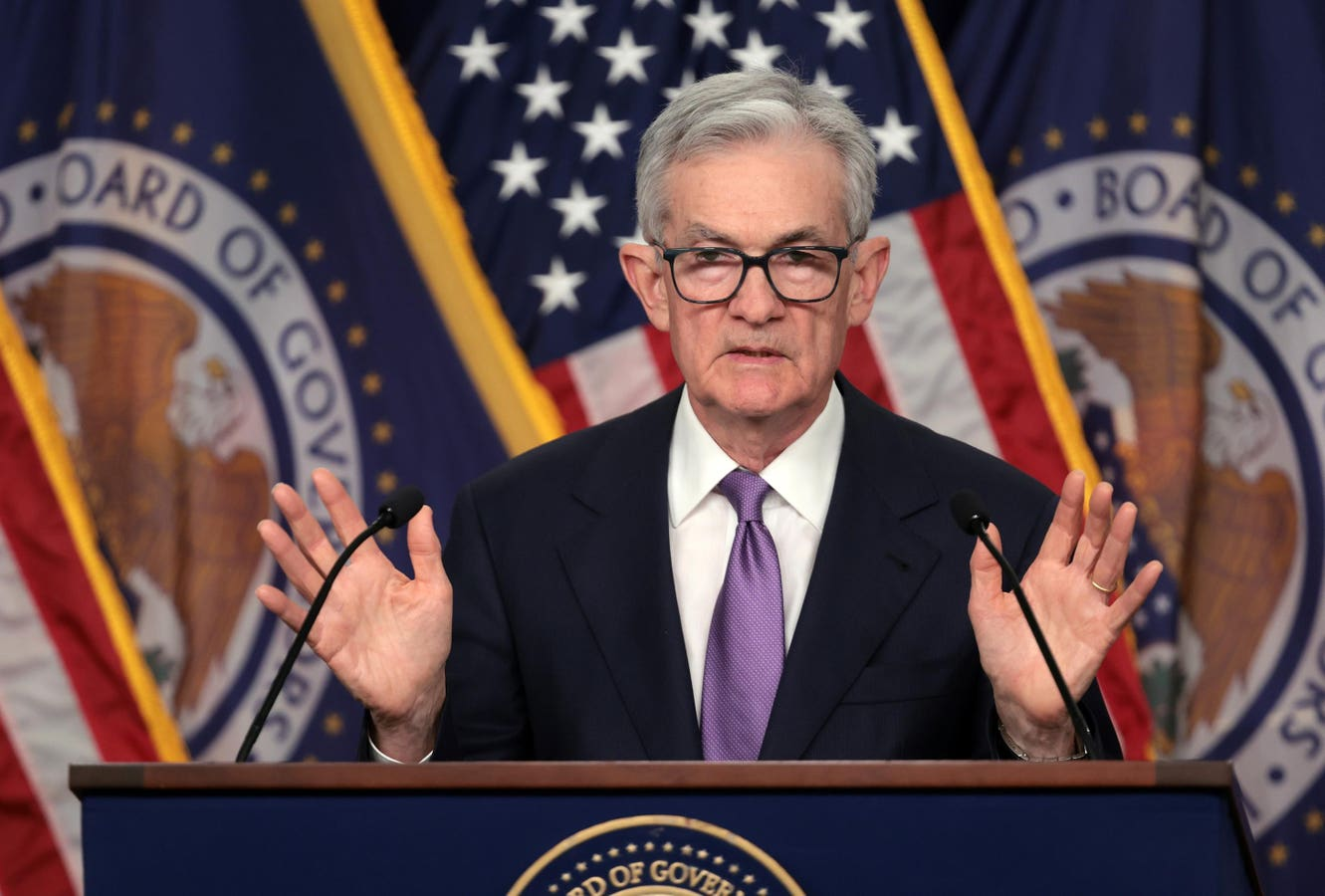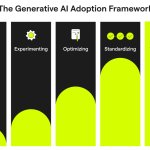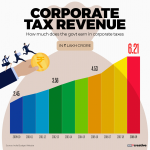As the Federal Reserve recently announced a significant Fed rate cut, the implications for consumers and the broader economy are profound. This half-point reduction marks the first of its kind in four years, aiming to stimulate economic activity amidst various market pressures. The impact of the Fed rate cut is especially felt in housing, where lower mortgage rates can enhance affordability for buyers and ease the burden of consumer debt. Furthermore, this move reflects the Fed’s response to economic growth and inflation trends, signaling a proactive stance in managing financial dynamics. As interest rates adjust, individuals may experience a respite from the financial strains of high-cost borrowing, aligning with the Fed’s objective to boost consumer confidence.
With the recent decision by the central bank to lower benchmark interest rates, many are left wondering what this means for everyday Americans. This pivotal moment, termed a monetary policy adjustment, is expected to influence various areas such as home loans and consumer spending. The reduction in rates is designed to spur economic momentum, making it easier for citizens to manage their debts while potentially reigniting housing demand. As these lending costs decrease, borrowers may find relief from high mortgage payments, contributing positively to the housing market. Overall, this policy shift reflects an effort to foster an environment conducive to sustained economic recovery and growth.
Understanding the Impact of the Fed Rate Cut
The recent Fed rate cut signifies a shift in economic policy aimed at stimulating growth and reducing borrowing costs. The Federal Reserve’s decision to lower interest rates by half a percentage point is designed to ease the financial burden on consumers, particularly those managing variable-rate debts like credit cards and car loans. By cutting the Fed funds rate, the central bank aims to spur consumer spending, which is crucial for economic growth. Essentially, when borrowing becomes cheaper, more consumers are likely to take on loans for major purchases, potentially leading to a more robust economy.
However, the long-term effects of this rate cut are still uncertain. While it can initially boost consumer confidence and spending, there are questions about how lasting these effects will be. Economic growth and inflation will naturally respond to such policy changes, but they are also influenced by broader global economic conditions. The Fed’s action may help reduce inflation rates in the short term, but if the economy overheats due to excessive spending, it might lead to further inflation, prompting additional rate adjustments.
Mortgage Rates and Housing Affordability
The connection between the Fed rate cut and mortgage rates is significant, as lower interest rates typically translate to reductions in mortgage rates. In recent months, we have already observed mortgage rates trending downward, a shift anticipated by the market in light of the Fed’s easing policy. This decline can provide much-needed relief to potential homebuyers and current homeowners looking to refinance, easing the financial strain associated with high mortgage costs.
Despite the positive outlook, there remains a pressing concern regarding housing affordability. Although lower mortgage rates can make buying a home more accessible, the market dynamics of supply and demand also play a crucial role. In many regions, housing availability continues to be a challenge, which means that even with lower rates, some consumers may still find it difficult to afford a home. Hence, while the Fed’s actions can aid in making mortgage payments more manageable, structural issues in the housing market still need addressing for a comprehensive solution to the affordability crisis.
Consumer Debt Relief Post-Fed Rate Cut
The impact of the Fed rate cut extends beyond just mortgage rates; it also provides potential relief to consumers struggling with various forms of debt. Lower interest rates can facilitate a more favorable environment for paying down high-interest debt, especially those associated with credit cards. With the reduction of rates, consumers might find themselves in a better position to manage their payments, leading to improved financial stability and reduced consumer debt burdens over time.
Nevertheless, while the rate cut may contribute to lowering monthly payments for some borrowers, the timing and extent of this relief can vary. Many lenders adjust their rates gradually, and thus, consumers may not immediately feel the benefits of the Fed’s policy change. Furthermore, economic uncertainty, including potential job market fluctuations and inflation concerns, means that consumers should still be cautious about accumulating more debt, even as rates fall.
Economic Growth and Inflation Dynamics
The decision to cut the fed rate inherently aims to rejuvenate economic growth while carefully managing inflation. By lowering borrowing costs, the Fed hopes to encourage increased spending and investment, which can, in turn, invigorate economic activity. However, the delicate balance between promoting growth and controlling inflation is critical. While lower rates can lead to sustained growth, if the economy accelerates too quickly, it could lead to inflationary pressures that counteract these very gains.
Economic growth, particularly in areas like job creation, is a key focus for the Fed. As businesses respond to lower interest rates by investing in expansion and hiring, we may see a gradual increase in employment opportunities, fostering a healthier economy. However, stakeholders must remain vigilant regarding inflation statistics; persistent inflation could push the Fed to raise rates again, potentially derailing the recovery and leading to a cycle of economic volatility.
Market Reactions to the Fed Rate Cut
The market’s reaction to the Fed’s recent rate cut reflects the broad implications that monetary policy can have across financial sectors. Investors typically view rate cuts favorably, as they may signal a supportive environment for corporate profits. With lower borrowing costs, companies can finance expansion efforts more efficiently, which often results in increased stock prices. However, the reaction from Wall Street will also depend on how investors interpret the Fed’s future intentions in light of economic indicators.
In addition to stock markets, the rate cut also influences bond markets, particularly those tied to government securities. Yields on Treasuries tend to fall when the Fed reduces rates, making them less attractive compared to equities. This interplay between different asset classes showcases how interconnected the financial landscape is, and it underscores the potential challenges investors face as they navigate an economy shaped by the Fed’s policy decisions.
The Future of Interest Rates and Economic Policy
Looking ahead, the trajectory of interest rates will depend largely on forthcoming economic data and the Fed’s ongoing assessments of market conditions. With more potential rate cuts indicated for the upcoming months, it is crucial for consumers and businesses alike to brace for adjustments in their financial strategies. These anticipated changes at the Fed reflect a proactive approach to managing economic uncertainties and indicate a commitment to fostering a stable economic environment.
Moreover, it will be vital to monitor how these decisions affect consumer confidence and spending behavior in the coming quarters. If the Fed maintains its course, we may witness continued gradual easing of borrowing costs, which can stimulate more robust consumer activity. However, any fluctuations in inflationary trends or employment statistics could lead to a recalibration of policy strategy by the Fed, emphasizing the ongoing nature of economic management in the face of evolving challenges.
Preparing for Changes in Consumer Behavior
As consumers adjust to changes stemming from the Fed’s rate cuts, understanding evolving behavior patterns is essential. Lower interest rates typically lead to increased willingness to take on loans or make larger purchases, such as homes and vehicles. However, economists caution that consumer sentiment can be quite sensitive, meaning rapid shifts can occur based on external economic indicators or potential volatility in the market.
Adapting to these changes will require businesses to stay in tune with consumer trends and behaviors, leveraging data to meet shifting needs. By anticipating increased demand or changes in purchasing patterns, companies can better align their marketing efforts and inventory management strategies. This responsiveness will be crucial in maximizing opportunities presented by an evolving economic landscape influenced by the Fed’s monetary policy.
The Broader Economic Environment and Fed Actions
The Federal Reserve’s actions cannot be viewed in isolation; they are part of a broader economic environment influenced by global and domestic factors. Geopolitical developments, trade relations, and consumer sentiment all play significant roles in shaping reactions to rate cuts. As the Fed moves forward with potentially more cuts, it must remain aware of these complexities and their implications.
In a competitive global market, understanding the interplay between domestic monetary policy and global economic conditions is critical. For example, if other major economies are also experiencing downturns, the Fed’s efforts to stimulate the U.S. economy could yield mixed results internationally. Stakeholders must consider these broader implications as they navigate the effects of Fed policy in their economic decisions and long-term strategies.
Navigating Financial Challenges Amid Rate Cuts
As the Federal Reserve implements cuts to interest rates, individuals and businesses must navigate an evolving financial landscape filled with both opportunities and challenges. While the immediate effect may be lower borrowing costs, there is also a pressing need for careful financial planning amid economic uncertainties. Consumers should evaluate their financial health and consider how shifts in interest rates might affect their spending and saving strategies moving forward.
Moreover, amidst potential relief from mortgage rates and consumer debt, understanding the risks is equally crucial. Consumers might feel incentivized to take on more debt due to lower costs, but it’s essential to balance this with prudent budgeting practices. Maintaining a clear understanding of one’s financial obligations and future economic conditions will allow individuals and businesses to make informed decisions in an economy influenced by the Fed’s monetary policies.
Frequently Asked Questions
What is the impact of the Fed rate cut on mortgage rates?
The recent Fed rate cut is expected to lead to a decrease in mortgage rates over time. As the Federal Reserve eases policy, mortgage rates are likely to decline, which could improve housing affordability. This should benefit home buyers and those looking to refinance, although mortgage rates remain high compared to historical lows.
How do Fed rate cuts affect economic growth and inflation?
Fed rate cuts generally stimulate economic growth by lowering borrowing costs, which encourages spending and investment. However, these cuts can also lead to slightly higher inflation as increased consumer spending may boost demand. The goal is to strike a balance that supports growth while keeping inflation in check.
Will consumers see debt relief after the Fed rate cut?
Consumers may see some relief in their debt repayments as interest rates on credit cards, auto loans, and other debts are likely to decrease following the Fed rate cut. However, the full impact may take some time, and it is uncertain how quickly rates will drop across all consumer debts.
What does a Fed rate cut indicate about interest rates and housing?
A Fed rate cut signals that interest rates are set to decrease, which typically benefits the housing market by making mortgages cheaper. This can lead to increased home buying activity and may help address the current housing affordability crisis.
How long will it take for the impact of the Fed rate cut to reflect in consumer loans?
The effects of a Fed rate cut on consumer loans may not be immediate. While some rates may start to decline gradually, higher uncertainty means consumers could continue to face relatively high rates for another year. Changes in market expectations and risk assessments will also play a role.
| Key Point | Details |
|---|---|
| Fed Rate Cut | The Federal Reserve cut a key interest rate by 0.5 percentage points, the first reduction in four years. |
| Economic Impact | The cut aims to lower borrowing costs for consumers and signal strength in the economy while combating inflation. |
| Future Rate Cuts | Economists expect possibly two more rate cuts by the end of the year, depending on economic data such as inflation and job growth. |
| Mortgage Rates | Mortgage rates may continue to decline, contributing to improved housing affordability. |
| Consumer Debt Relief | Consumers with credit card and car loan debt may benefit, but relief may take time due to still high interest rates. |
Summary
The Fed rate cut marks a significant shift in monetary policy aimed at boosting economic growth while controlling inflation. As consumers can expect benefits from the recent cuts, the timeline and extent of these benefits remain uncertain. Mortgage rates are projected to decrease further, alleviating some housing cost pressures. Overall, while the initial response to the Fed rate cut shows promise for economic recovery, the impact will be gradual.


